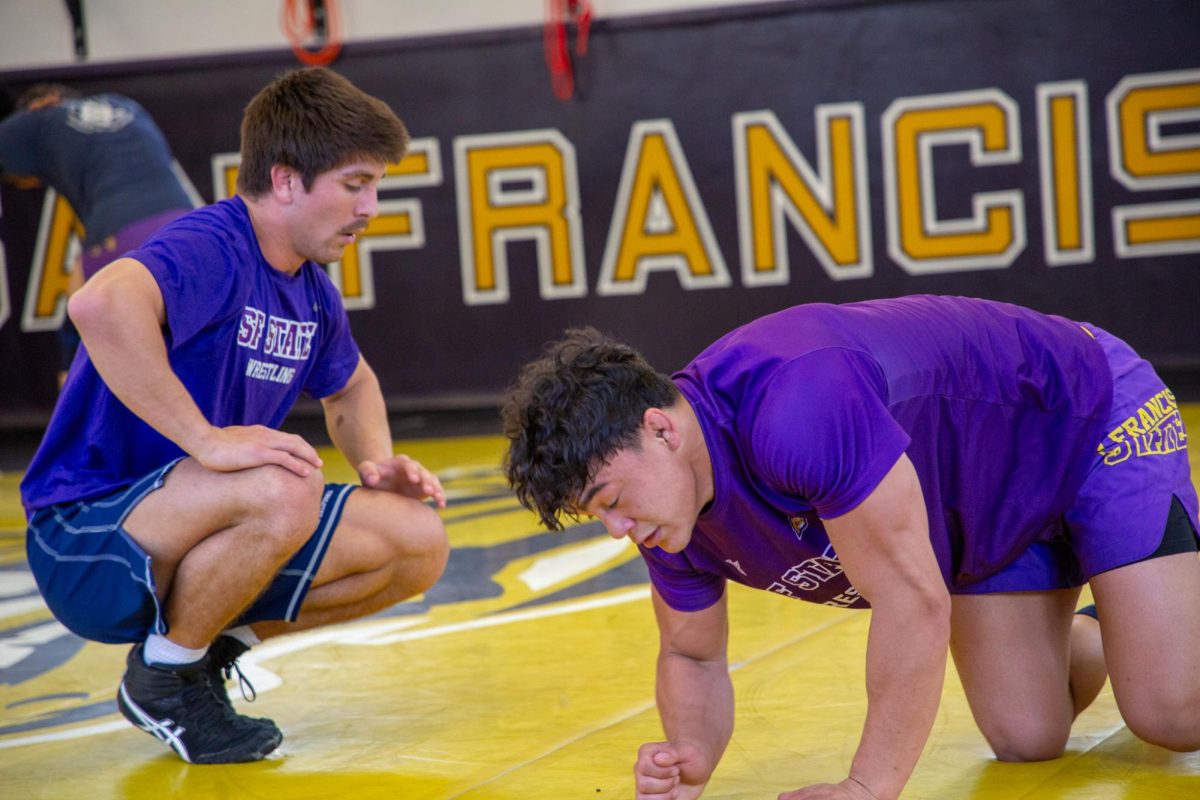Ben Gershen had just enough battery on his iPod to play one more song as he looked out 19,000 feet above Africa. He scrolled and scrolled and finally found the right one.
Just as the sun began to rise, the lyrics of “Africa” by Toto began to play in his ears.
Gershen, only 15 at the time, had climbed Mt. Kilimanjaro, a journey which took the teenager seven arduous days to complete, five days going up the mountain and another two descending it.
“I (tried) to focus on small things, just one step or I just want to make it to that rock then to the next one,” said Gershen, now a 23-year-old SF State student. “And I noticed I’m not a social hiker, I’m just in my mind, like don’t talk to me.”
Mt. Kilimanjaro is located in Southern Africa in the country of Tanzania, and is one of the tallest mountains in the world, standing 19,341 feet high.
A group of what started out as 12 climbers embarked on a journey to the top, but less than half would actually make it there.
One of the climbers, Gershen’s stepmom Joy Becker, 62, is an avid climber having already climbed Mt. Whitney, the highest summit in the United States.
“I first asked Ben if he wanted to come along (on) the climb,” said Becker. “He agreed, so I was like, ‘Let’s check with mom first.’”
The first days of the climb consisted of beautiful scenery and a relaxed environment, even though the climbers hiked 20 miles every day. The group enjoyed the early climb before they faced the difficult part.
Gershen and the rest of the group were always being advised to slow down and stay calm. The locals of Tanzania would repeat this, making sure the group would not forget.
“The locals and the guides would keep saying ‘Poli poli!’ which in Swahili means chill, relax, or take it easy,” said Gershen.
As the altitude increased, some of the climbers began to feel sick. The guides advised those climbers to begin to descend; the only cure for altitude sickness is to turn around and go back down.
By the time the group had reached Gilman’s Point, a major turnaround spot, the number of climbers had been cut in half. This was the last stop before the last push to the summit of the mountain.
Becker and Gershen both made it to this stop and stayed in the same tent at Gilman’s Point. One night, both were having dinner in the tent and suddenly, both erupted in laughter for the next 10 minutes.
“Yeah I don’t know why, but we just bursted out laughing,” said Becker. “I think it was the combination of the altitude and how exhausted we were.”
Once they reached the camp, they went to sleep around noon since they would be up at midnight to begin the last push. They made sure the climb began at midnight because the ground was frozen, making it easier to climb.
“There’s this joke where if you saw the trail ahead of you, you would probably turn around,” said Gershen. “That’s why we did it in the dark.”
The last push would take eight hours. Gershen had reached the falls summit, with five other climbers. By the time he reached the summit, Gershen’s water was completely frozen. His eyes began to twitch; it became hard to open his eyelids, and he began feeling the effects of dehydration.
Samuel, the main guide of the climb, examined every climber. He held a torch up to their eyes, checking their pupils.
“He looked into my eyes with a torch,” said Judy MacArthur, family friend of Gershen and organizer of the climb. “He could tell whether or not who could continue on.”
MacArthur, a UK resident, is a worldwide climber, having climbed Mount Kinabalu in Southeast Asia. She believed that Gershen would make it to the top.
“Ben was one of the youngest on the climb,” said MacArthur. “I kind of knew that he would make it to the top.”
Gershen was advised to head back down, due to the frozen water. He had reached the summit, but could not make it to the top of the glacier. The last climb around to the other side of mountain would take another hour and a half.
Gershen was not able to reach the top, due to his physical state, and had to turn back.
Although the majority of the trip was focused on climbing Mt. Kilimanjaro, Gershen took something else from the trip.
“It was the first time I saw poverty on a wide-scale,” said Gershen. “The trip was arched with this theme that there’s a lot of people out there that don’t have it as good as me.”
Gershen believes that the climb changed his perspective and how he lives his life today.
“I don’t really have bad days, ever,” said Gershen. “Part of that for me is perspective. Realizing I can be stressed out on this and that, but at least I don’t have to walk six miles for water.”
After climbing most of Mt. Kilimanjaro, Gershen would do it again, with another goal in mind.
“I would go back and climb all the way to the top,” said Gershen. “They say in climbing, you reach your own summit, next time I will make it to the top.”







